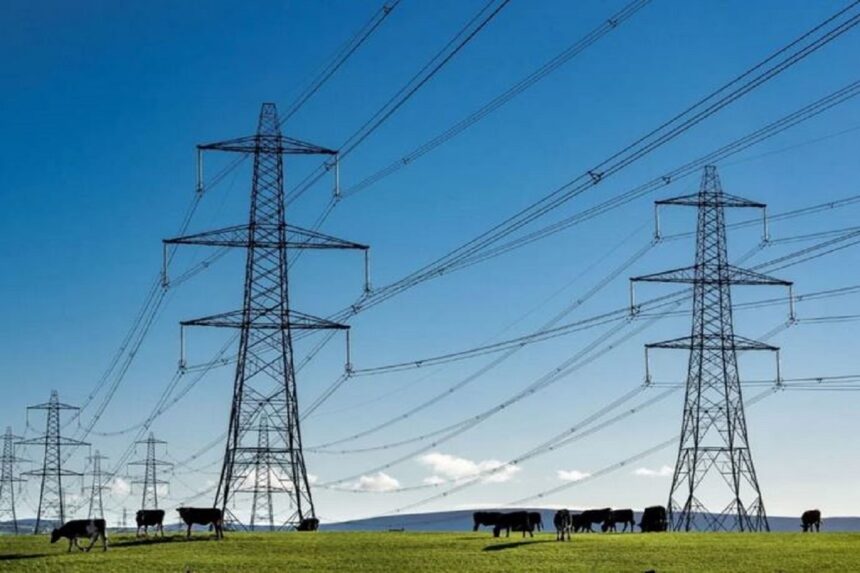The U.S. Department of Energy (DOE) has issued a record-breaking $15 billion loan to Pacific Gas and Electric Company (PG&E) to support a transformative grid modernization plan aimed at addressing California’s growing energy demands. The loan is the largest ever offered to a U.S. utility and will finance PG&E’s ambitious Project Polaris.
PG&E’s Project Polaris: A Strategic Push for Grid Modernization
PG&E will use the loan to fund Project Polaris, an expansive infrastructure initiative designed to enhance California’s electricity grid. The project includes:
- Hydropower and Energy Storage Expansion: PG&E plans to increase its hydropower capacity and develop large-scale battery energy storage systems to improve grid reliability and support renewable energy integration.
- Grid Upgrades: The loan will fund reconductoring projects to expand transmission capacity and introduce advanced grid-enhancing technologies.
- Virtual Power Plants: PG&E intends to deploy virtual power plants throughout its service area, leveraging decentralized energy resources to boost grid flexibility and resilience.
The utility will have access to the loan funds through 2032 to help meet future electricity demand, improve system reliability, and reduce costs for its customers.
DOE’s Loan Programs Office and the Energy Infrastructure Reinvestment Initiative
The loan is issued by the DOE’s Loan Programs Office (LPO) under its Energy Infrastructure Reinvestment (EIR) initiative, which supports utility infrastructure projects with geographic and technological diversity. This marks the second loan from the EIR program, which provides flexible financing tailored to regulated, investment-grade utility borrowers.
Chris Creed, Chief Investment Officer of the LPO, emphasized that the loan would help PG&E meet rising electricity demand and enhance grid reliability across its service area.
Data Center Growth and the Need for Enhanced Grid Infrastructure
California is witnessing a surge in data center demand, which places added pressure on the state’s electricity grid. PG&E projects that over 3.5 GW of new data center capacity will be operational in the state by 2029. Significant capacity requests have already been made across key areas:
- San Jose: 1.6 GW of capacity requested from 11 different operators, including 100 MW expected in 2025.
- Hayward: 975 MW requested, with a large portion scheduled for 2028.
- Other cities, including Fremont (230 MW), Gilroy (210 MW), and Milpitas (210 MW), are also seeing substantial demand.
PG&E estimates that $500 million to $1.6 billion in capital investment will be necessary to meet the electricity requirements of these expanding data centers.
However, there are concerns about the timely availability of transmission infrastructure. A nonprofit organization, GridClue, has ranked California 49th out of 50 states in terms of grid resilience. PG&E’s own infrastructure struggles, especially following its bankruptcy after the 2018 Camp Fire, have raised doubts about the utility’s ability to meet the growing energy needs.
The Path Forward: Investments and Challenges
PG&E has committed to addressing these infrastructure challenges by investing heavily in its transmission system. The utility plans to allocate $9.1 billion to Federal Energy Regulatory Commission (FERC)-related transmission projects between 2024 and 2028. This investment aims to strengthen the grid and support both residential and industrial electricity demands, including the surge from new data centers.
Despite these investments, delays in energizing substations and other critical infrastructure, particularly in Silicon Valley, remain a concern. PG&E is working diligently to ensure that the grid can accommodate the expected influx of data center capacity, though many projects are unlikely to be energized before 2028 or later.
FAQ: Understanding the PG&E Loan and Grid Modernization
1. What is Project Polaris, and how will it benefit California’s electricity grid?
Project Polaris is PG&E’s comprehensive grid modernization initiative, designed to increase hydropower and battery storage capacity, upgrade transmission infrastructure, and deploy virtual power plants. This will enhance grid reliability and help meet growing electricity demand.
2. How will the $15 billion loan help PG&E?
The loan will enable PG&E to fund essential grid upgrades and support its infrastructure projects, including hydropower expansions and advanced energy storage systems. These investments will help meet future energy demands and improve overall grid stability.
3. Why is grid resilience a concern in California?
California faces challenges with its grid’s ability to withstand disruptions, ranking 49th in grid resilience. This is particularly concerning as demand for electricity increases, especially from growing data centers that require significant energy capacity.
4. How much new data center capacity is expected in California by 2029?
PG&E anticipates that over 3.5 GW of data center capacity will come online in California by 2029, with significant demand in regions like San Jose, Hayward, and Fremont.
5. What challenges does PG&E face in meeting the energy demands of new data centers?
PG&E faces challenges with timely infrastructure development. Delays in energizing key substations and grid capacity limitations, particularly in Silicon Valley, could hinder the ability to meet data center demands on schedule.



















